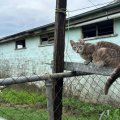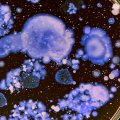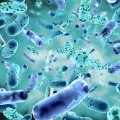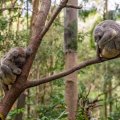
The University of Queensland is again Australia’s highest-ranking institution on the Nature Index, further strengthening its global reputation as a top-tier research organisation.
The index rates institutions and countries according to the number and quality of research publications across 68 of the world’s leading science journals, including journals within and outside the Nature publishing group.
UQ has retained the top spot as Australia’s highest-ranking university in the 2016 top academic institutions and top institutions tables.
The University has held the top position in Australia for the past two years.
The index ranks UQ at 89 among the world’s top academic institutions, and at 27 in the Asia-Pacific.
Harvard University ranks as the leading academic institution worldwide, followed by Stanford University.
Monash University ranks at 93 globally, the Australian National University at 100, and The University of Melbourne at 130.
The rankings are based on the “weighted fractional count”, considered the most indicative of various measures that Nature Index publishes.
UQ Vice-Chancellor and President Professor Peter Høj said UQ continued its formidable performance in the life sciences – in fields including biology, microbiology, neuroscience, genetics, medicine and biotechnology.
“The index records that in 2015 the majority of UQ publications included in the Nature Index were the Life Sciences (weighted fractional count 47.17), followed by Chemistry (36.7), the Physical Sciences (18.72), and then Earth and Environmental Sciences (7.14),” Professor Høj said.
He said the rankings highlighted the importance of collaboration between researchers and institutions.
“The vast majority of UQ’s research is co-published with other organisations, giving our researchers collaboration opportunities with many of the highest-ranked experts in the world.
“Equally, the world has access to UQ’s finest minds in the many areas where we have leading expertise.
“In this way, diverse knowledge and perspectives are brought to bear on problems we are tackling to create change to build a better world.”
UQ’s top-ranking researchers highlighted in the latest Nature Index include:
- Professor Peter Visscher of the Queensland Brain Institute (QBI), who co-authored Dominance Genetic Variation Contributes Little to the Missing Heritability for Human Complex Traits in AJHG, the American Journal for Human Genetics. (Altmetric news summary here; Nature Index report here.)
- Professor Paul Alewood of the Institute for Molecular Bioscience, who co-authored Optimized deep-targeted proteotranscriptomic profiling reveals unexplored Conus toxin diversity and novel cysteine frameworks in PNAS. (Altmetric news summary here; Nature Index report here.)
- Dr Jeremiah Shuster and Professor Gordon Southam of the School of Earth Sciences, who co-authored The in-vitro “growth” of gold grains in Geology. (Altmetric news summary here.)
- Professor Justin Marshall of the QBI, who co-authored Circularly Polarized Light as a Communication Signal in Mantis Shrimps in Current Biology. (Altmetric news summary here; Nature Index report here.)
- Professor Catherine Lovelock of the School of Biological Sciences, who was the lead author of The vulnerability of Indo-Pacific mangrove forests to sea-level rise in Nature. (Altmetric news summary here; Nature Index report here.)
- UQ’s Dr Paul Evans, Donovan Parks, Steven Robbins, Professor Suzanne Golding and Professor Gene Tyson, who co-authored Methane in the archaeal phylum Bathyarchaeota revealed by genome-centric metagenomics in Science. (Altmetric news summary here; Nature Index report here).
Nature Index today opened unrestricted access to annual tables showing the output of articles published from 2012 to 2015 from more than 8000 institutions worldwide.
Media: UQ Communications, communications@uq.edu.au, +61 7 3346 7086.
.jpg)











